What Is the Lifespan of Batteries in Emergency Lights
Understanding the lifespan of batteries in emergency lights is crucial for ensuring safety and reliability during power outages or emergencies. Emergency lights rely heavily on their batteries to function effectively when the main power supply fails. Knowing how long these batteries last helps in planning maintenance schedules and replacement cycles. In this article, we will explore the factors that influence the lifespan of batteries, types of batteries used in emergency lights, and tips for prolonging their service life.
- Factors Affecting the Lifespan of Batteries in Emergency Lights
- Types of Batteries Used in Emergency Lights and Their Lifespan
- How to Extend the Lifespan of Batteries in Emergency Lights
- Signs That Emergency Light Batteries Are Nearing End of Life
- Best Practices for Replacing Emergency Light Batteries
- Impact of Battery Lifespan on Emergency Light Reliability
- Emerging Technologies to Improve Battery Lifespan in Emergency Lighting
Factors Affecting the Lifespan of Batteries in Emergency Lights
Battery Chemistry and Its Impact on Lifespan
The lifespan of batteries largely depends on the battery chemistry. The most common battery types used in emergency lighting systems are lead-acid, nickel-cadmium (NiCd), and lithium-ion batteries. Each type has distinct characteristics affecting longevity.
Lead-Acid Batteries: Traditional and cost-effective but tend to have shorter lifespans ranging from 3 to 5 years.
Nickel-Cadmium Batteries: More durable with lifespans between 5 to 7 years but suffer from memory effect if not properly maintained.
Lithium-Ion Batteries: Increasingly popular due to their longer lifespan of 8 to 10 years and better energy density.
Usage Patterns and Charging Cycles
The way emergency light batteries are used and charged influences their lifespan. Frequent discharges, improper charging, and long periods without usage can reduce battery life. Maintaining a regular testing and charging routine is essential to maximize lifespan.
Environmental Conditions
Temperature, humidity, and exposure to harsh environments can degrade batteries faster. High temperatures accelerate chemical reactions inside batteries, leading to capacity loss, while extreme cold may reduce their effectiveness temporarily.
Types of Batteries Used in Emergency Lights and Their Lifespan
Lead Acid Batteries
Lead acid batteries are the most commonly used in emergency lighting due to their affordability and availability. Their lifespan of batteries typically ranges from 3 to 5 years, but this can be shorter if the battery undergoes deep discharges frequently or is exposed to high temperatures.
Nickel Cadmium Batteries
Nickel Cadmium batteries offer a longer lifespan of batteries compared to lead acid, generally lasting 5 to 7 years. However, they require proper maintenance to avoid the memory effect, which can reduce capacity over time.
Lithium Ion Batteries
Lithium-ion batteries are becoming a preferred choice for emergency lighting systems because of their longer lifespan and lower maintenance. With an average lifespan of batteries between 8 to 10 years, they provide reliable performance and better energy efficiency.
>>See also Can You Safely Use an Old Vape Battery in a Bluetooth Speaker
How to Extend the Lifespan of Batteries in Emergency Lights
Regular Testing and Maintenance
Routine testing ensures that batteries remain functional and ready for use. Monthly or quarterly testing cycles help detect failing batteries early and prevent unexpected failures during emergencies.
Proper Charging Practices
Using smart chargers designed for specific battery chemistries helps prevent overcharging or undercharging, both of which can reduce the lifespan of batteries. Maintaining the correct charge voltage and current is key.
Environmental Control
Installing emergency lights in controlled environments with stable temperatures and humidity levels can significantly improve battery longevity. Avoid placing units in areas prone to heat or moisture exposure.
Signs That Emergency Light Batteries Are Nearing End of Life
Reduced Backup Time
A common indicator is the decrease in backup runtime during a power outage. If the light fails to stay on for the rated duration, it may signal battery deterioration.
Swelling or Leakage
Physical signs such as swelling or leakage indicate internal damage and the need for immediate replacement to avoid safety hazards.
Frequent Charging Requirements
If batteries require more frequent recharging or do not hold a charge for long, their lifespan of batteries is likely nearing its end.
>>See also Is It Possible to Jump Start a Motorcycle Using a Lithium Battery
Best Practices for Replacing Emergency Light Batteries
Choosing the Right Replacement Battery
Match the replacement battery with the manufacturer’s specifications to ensure compatibility and optimal performance.
Professional Installation
Battery replacement should be conducted by qualified technicians to guarantee proper handling and adherence to safety standards.
Disposal of Old Batteries
Proper disposal following environmental regulations helps reduce ecological impact and promotes recycling.
Impact of Battery Lifespan on Emergency Light Reliability
The reliability of emergency lighting systems is directly tied to the lifespan of batteries. Regular maintenance and timely replacement prevent failures when the lights are most needed, enhancing safety in workplaces and public spaces.
Emerging Technologies to Improve Battery Lifespan in Emergency Lighting
Advancements in battery technology, such as solid-state batteries and improved lithium-ion chemistries, promise longer lifespans and greater efficiency for emergency lighting systems in the near future.
Understanding the lifespan of batteries in emergency lights is essential for ensuring that these critical safety devices operate when needed. Regular maintenance, proper charging, and environmental control all contribute to maximizing battery life. By staying informed and proactive, you can maintain reliable emergency lighting that protects lives and property during outages.





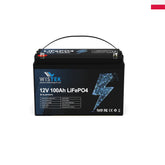


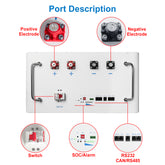
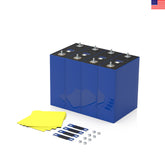
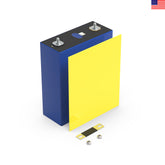


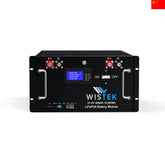










Leave a comment
All blog comments are checked prior to publishing